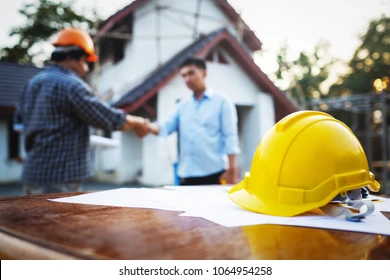In the realm of construction, a revolutionary wave is sweeping across traditional methodologies, transcending boundaries and unlocking the potential for a new era of housing—the era of 3D printed houses. This cutting-edge technology holds the promise of reshaping the way we conceive, design, and construct homes, offering a glimpse into a future where housing is not just built but crafted with precision and efficiency. At the heart of this groundbreaking innovation is the process of 3D printing, a technique that extrudes layers of concrete or other building materials to create entire structures layer by layer. The advantages of 3D printing houses are multifaceted, encompassing speed, cost-effectiveness, and sustainability. Unlike conventional construction, which can take months or even years to complete, 3D printing can erect a house in a matter of days, significantly reducing construction time. This acceleration not only addresses the pressing global housing shortage but also minimizes the disruption caused by lengthy construction projects.
 The economic benefits of 3D printed houses are equally compelling. The technology utilizes fewer raw materials compared to traditional construction methods, resulting in cost savings. Moreover, the efficiency of the 3D printing process translates into reduced labor expenses, making housing more affordable and accessible to a broader demographic. This democratization of home construction has the potential to redefine societal norms by providing shelter that is not just a basic necessity but a realistic aspiration for many. Beyond its expeditious and cost-effective nature, 3D printing aligns seamlessly with the principles of sustainability. The construction industry is notorious for its environmental impact, contributing to deforestation, excessive energy consumption, and substantial waste generation. 3D printing addresses these concerns by minimizing material wastage and utilizing eco-friendly construction materials. The precision of the printing process ensures that resources are used efficiently, leading to a significant reduction in the carbon footprint associated with housing construction.
The economic benefits of 3D printed houses are equally compelling. The technology utilizes fewer raw materials compared to traditional construction methods, resulting in cost savings. Moreover, the efficiency of the 3D printing process translates into reduced labor expenses, making housing more affordable and accessible to a broader demographic. This democratization of home construction has the potential to redefine societal norms by providing shelter that is not just a basic necessity but a realistic aspiration for many. Beyond its expeditious and cost-effective nature, 3D printing aligns seamlessly with the principles of sustainability. The construction industry is notorious for its environmental impact, contributing to deforestation, excessive energy consumption, and substantial waste generation. 3D printing addresses these concerns by minimizing material wastage and utilizing eco-friendly construction materials. The precision of the printing process ensures that resources are used efficiently, leading to a significant reduction in the carbon footprint associated with housing construction.
The promise of 3D printed houses extends beyond the tangible benefits of speed, cost-effectiveness, and sustainability. It unlocks a realm of design possibilities that were once constrained by the limitations of traditional construction techniques. Architects and designers can now envision and create structures that were previously deemed impractical or excessively complex. The flexibility of 3D printing allows for intricate and customized designs, enabling a new era of architectural innovation. In conclusion, 3D printed houses hold the key to building beyond boundaries and find this offer. The technology’s ability to revolutionize the construction industry by offering unprecedented speed, cost-effectiveness, sustainability, and design flexibility heralds a new chapter in the evolution of housing. As 3D printing continues to advance, its promise becomes ever more tangible, paving the way for a future where the dream of a home is not limited by traditional constraints but built upon the limitless possibilities of innovation.
